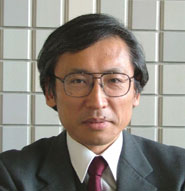
 |
 |
KATAGIRI Yasuhiro |
|
Homo sapiens have acquired, during the course of their evolution, the ability to handle media, e.g., external information representations. This capability appears to be specific to and characteristic of the human species. Activities such as drawing pictures on the surface of a rock or carving symbols onto a clay board are all means of expressing and externalizing human inner thoughts and emotions, giving them concrete form and physical substance. Media has provided humans with a way to shape ideas in our mind, record them, examine them from different perspectives, and communicate and share them with others. The human body is probably the most primitive and accessible form of media for information expression: from an angry face or a peace sign made with a hand gesture, to an elaborate movement in a dance or ritual performance. Bodily movements in classical martial arts, whose benefit and wisdom have recently become widely recognized, are also an instance of bodily media. Looking back at the history of media technology, we note that it began with static media, such as a clay board or Papyrus paper. Then came the development of dynamic media, such as movie and television, and we are now seeing the era of interactive media in the form of various incarnations of computer games. With the advent of ubiquitous technologies, media is also expanding both in space and time. The evolution of media technologies has brought about a tremendous increase in the capability of handling huge amounts of information. Early media technologies used to specialize in particular senses, whereas current technologies have come to increasingly appeal to all five senses of the body. In other words, the human body is regaining its significance with the evolution of technology. Recent sad incidents involving minors have called attention to the dark side of new media technologies. A lot of people raised concerns that computer games and Internet bulletin boards might have detrimental effects on child development. Among the prevalent concerns is the widely held fear that the speed of media technology evolution is so fast, compared with biological evolution based on genetic mutation, that once the evolution of technology leaves our hands, humans might not be able to catch up with it. In ATR Media Information Science Laboratories, we are conducting research on media technologies that aim to handle our experiences as new information content, which are to be captured, stored, queried and shared by people beyond the barriers of space and time. Experience comes through our entire body, through all of our five senses: visual, auditory, tactile, olfactory, and gustatory. It is then remembered, expressed and shared with others. Experience produces affection and empathy in people. It is also the source of creative activities. Experience has both a concrete aspect of raw sensations and an abstract aspect of kansei and reason. Our capability of having experiences must be engendered by our abilities to act with our bodies in our surrounding physical environment. We have to search for media technologies that appropriately accommodate the cognitive abilities rooted in our bodily activities. Those media technologies will be received by people to enable and support new types of human cognitive and social activities. The use of media is specific to humans. Media technology should provide us with prosperity, enjoyment and wisdom. We pursue symbiosis and co-evolution among humans and media technology through research on the development of media technology, the promotion of social practices of media technology and scientific studies on the human cognitive mechanisms of media use. |
||